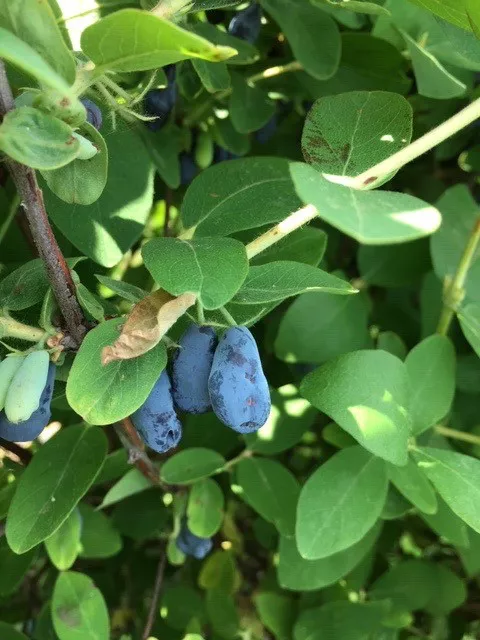Meet Honeyberry: A Blueberry-Like Fruit Full of Antioxidants

Honeyberry is growing in popularity in the cooler parts of the United States due to its ability to thrive in lower temperatures. The unusual fruit is likened to blueberry in appearance and flavor, but honeyberry's nutritional density makes it quite extraordinary.
While it looks a bit like a blueberry's odd-shaped relative, the fruit comes from a plant in the honeysuckle family—in fact, the berry is sometimes called blue honeysuckle. Honeyberry originated in Japan and is known as haskap in its native country. In addition to selections discovered in Japan, another of the first documented honeyberry subspecies was found in Russia.
What Does Honeyberry Taste Like?
Honeyberry flavor ranges from tart to sweet and is most commonly described as a cross between a raspberry and a blueberry. Honeyberry can be eaten all the ways you would a typical berry, from fresh to used in jams, syrups, wines, and baked goods. If you find honeyberry in your local market, substitute the fruits in a blueberry jam or strawberry muffin recipe for the mild-flavored berry.
Health Benefits of Honeyberry
Honeyberry is an immune system booster, thanks to its high antioxidant content. The fruit consistently produces the most anthocyanins among superfruits including blackberry, mulberry, purple grapes, and maqui berry. Anthocyanins are created by the natural pigments in blue- and red-tinted fruit and have been linked to improved eye health and other anti-inflammatory benefits such as reducing gingivitis and rheumatoid arthritis, preventing the growth of colon cancer cells, and boosting cardiovascular health. Beyond its antioxidant benefits, honeyberry is also high in fiber and vitamin C.
Growing Honeyberry at Home
Honeyberry will grow well in your home garden if you live in USDA Hardiness Zones 2-7. Because the plant thrives in cooler temperatures—it can withstand as low as -40°F and still produce berries in below-freezing conditions—pests aren't much of a problem. The plant likes sun and well-drained soil but can still do well in less ideal conditions. Honeyberry needs ample water and is not drought tolerant.
Honeyberry bushes bloom cream- and yellow-colored tubular flowers in spring. The plants require cross-pollination—they must be planted near an unrelated cultivar that blooms at the same time. Fall is considered the best time to plant honeyberry, though spring planting can also be successful. The oblong blue and purple fruits ripen in June.
It typically takes a few years for honeyberry bushes to produce a healthy bounty of fruit. Plants will only sprout a few berries in the first year or two after planting. By year three or four, bushes will yield 5 to 15 pounds of honeyberry fruits. Though pests aren't an issue, birds like to pluck the berries from the bushes. Once your honeyberry plants consistently produce fruit, cover them with netting for protection from birds.